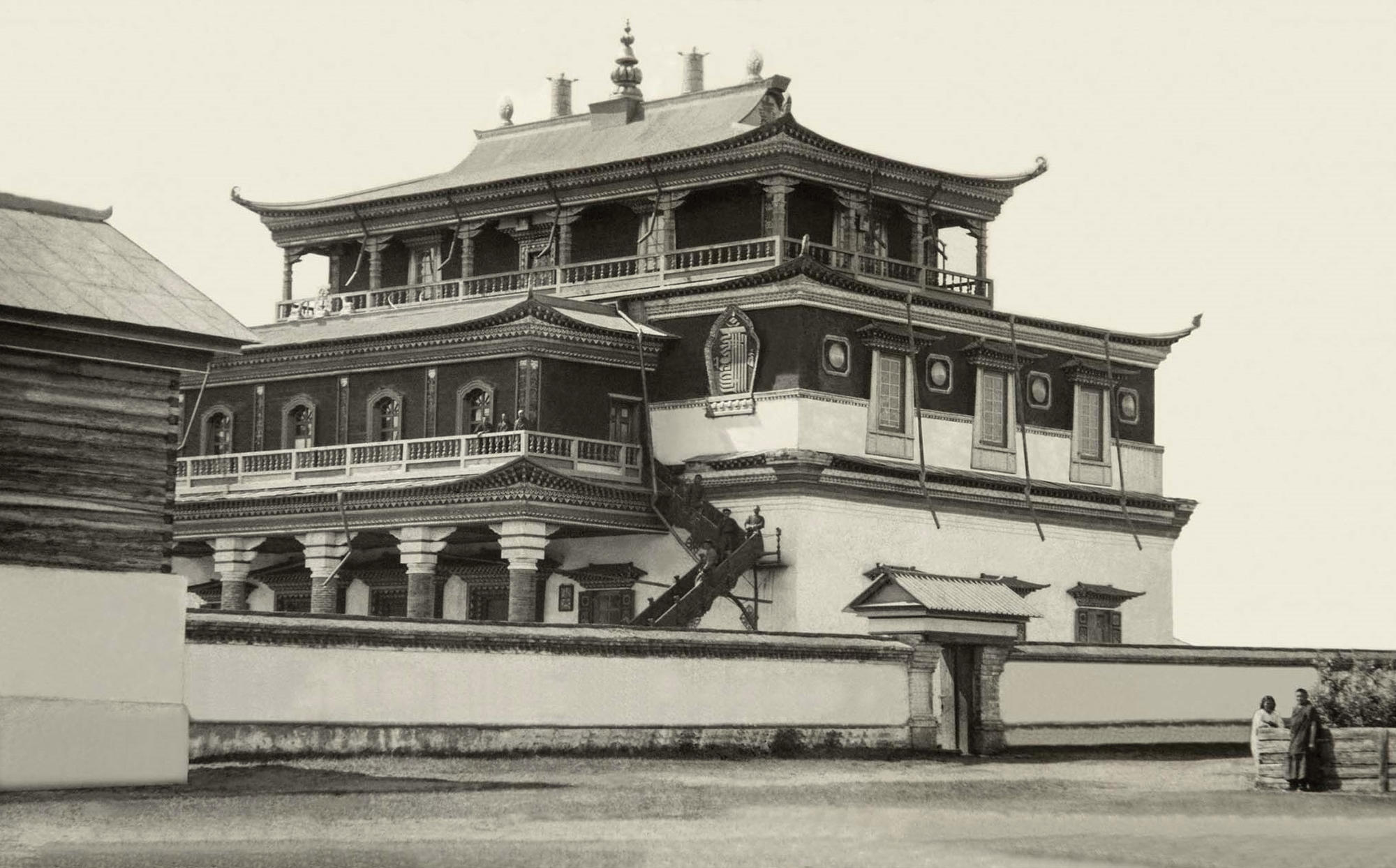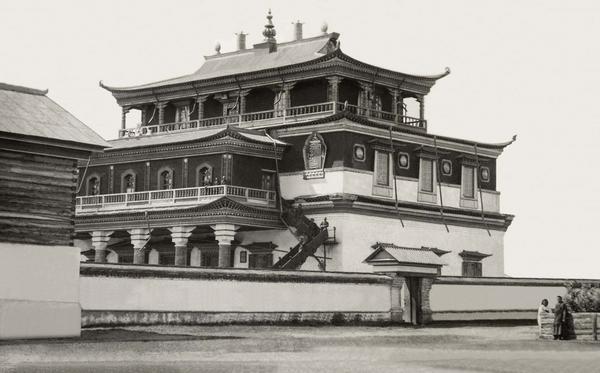Tsugolsky datsan (Tibetan: Dashi Choipelling) is the oldest Buddhist monastery in the Trans-Baikal Territory. It was founded in 1801 and is situated in Tsugol village.
According to the official list of the ‘Lama datsans in the Eastern Siberia’ till 1828 it was a felty dugan (a yurta where the first services were held). Shanzodba of Kudunsky datsan Lubsan-Dondob Dandarov (1781-1859) was the founder and the first shiretui (prior) of a datsan. He was famous for his erudition and comprehensive knowledge of the Buddhist philosophy. The construction of the three-storey Tsogchen dugan (the main cathedral church) was finished in 1844 at the time of the first prior’s work. Datsan made of stone was built in 1868. In 1887 Tsogchen dugan suffered from the fire, but later on was completely rebuilt and the architecture of that epoch survived to this day.
Tsugolsky datsan was one of the most important Buddhist centres of Trans-Baikal region where people used to get the classic theological education. In 1845 Lubsan Choybsan lama, who was one of the greatest students of L.-D. Dandarov, opened the first Buddhist faculty of philosophy (choyra) here, which became the basis for creating such schools in other Buryat datsans. Tsugolsky datsan was famous for its reincarnate custodians called “hubilgans”. It was this very datsan where the institute of reincarnate custodians got its development from in Trans-Baikal region. The 7th Gandzhurva Danzan Norboev was the most famous of hubilgans.
The first school of medicine “Manba Dugan” was founded in Tsugolsky datsan in 1869. Here the traditions of Tibetan medicine were studied, active translation activity was held, and Mongolian medical terminological base was developed. The second prior of the Tsugolsky datsan Galsam Jimba Dylgirov (1816-1872) made a translation of the main Tibetan medical texts “Rgyu-Bzhi” и “Lhantab” into Mongolian. Both tractates became the basic course books for the medical school of Tsugolsky datsan. In the end of the 19th century thanks to the efforts of Tsugolsky datsan’s lamas the famous ‘Atlas of Tibetan medicine’ was taken from Tibet. Up till 1926 it was used as a course book at the medical school. Studying the Tibetan medicine at datsan continued till 1930’s and stopped in connection with lamas’ persecution and repressions.
According to the official list of the ‘Lama datsans in the Eastern Siberia’ till 1828 it was a felty dugan (a yurta where the first services were held). Shanzodba of Kudunsky datsan Lubsan-Dondob Dandarov (1781-1859) was the founder and the first shiretui (prior) of a datsan. He was famous for his erudition and comprehensive knowledge of the Buddhist philosophy. The construction of the three-storey Tsogchen dugan (the main cathedral church) was finished in 1844 at the time of the first prior’s work. Datsan made of stone was built in 1868. In 1887 Tsogchen dugan suffered from the fire, but later on was completely rebuilt and the architecture of that epoch survived to this day.
Tsugolsky datsan was one of the most important Buddhist centres of Trans-Baikal region where people used to get the classic theological education. In 1845 Lubsan Choybsan lama, who was one of the greatest students of L.-D. Dandarov, opened the first Buddhist faculty of philosophy (choyra) here, which became the basis for creating such schools in other Buryat datsans. Tsugolsky datsan was famous for its reincarnate custodians called “hubilgans”. It was this very datsan where the institute of reincarnate custodians got its development from in Trans-Baikal region. The 7th Gandzhurva Danzan Norboev was the most famous of hubilgans.
The first school of medicine “Manba Dugan” was founded in Tsugolsky datsan in 1869. Here the traditions of Tibetan medicine were studied, active translation activity was held, and Mongolian medical terminological base was developed. The second prior of the Tsugolsky datsan Galsam Jimba Dylgirov (1816-1872) made a translation of the main Tibetan medical texts “Rgyu-Bzhi” и “Lhantab” into Mongolian. Both tractates became the basic course books for the medical school of Tsugolsky datsan. In the end of the 19th century thanks to the efforts of Tsugolsky datsan’s lamas the famous ‘Atlas of Tibetan medicine’ was taken from Tibet. Up till 1926 it was used as a course book at the medical school. Studying the Tibetan medicine at datsan continued till 1930’s and stopped in connection with lamas’ persecution and repressions.



